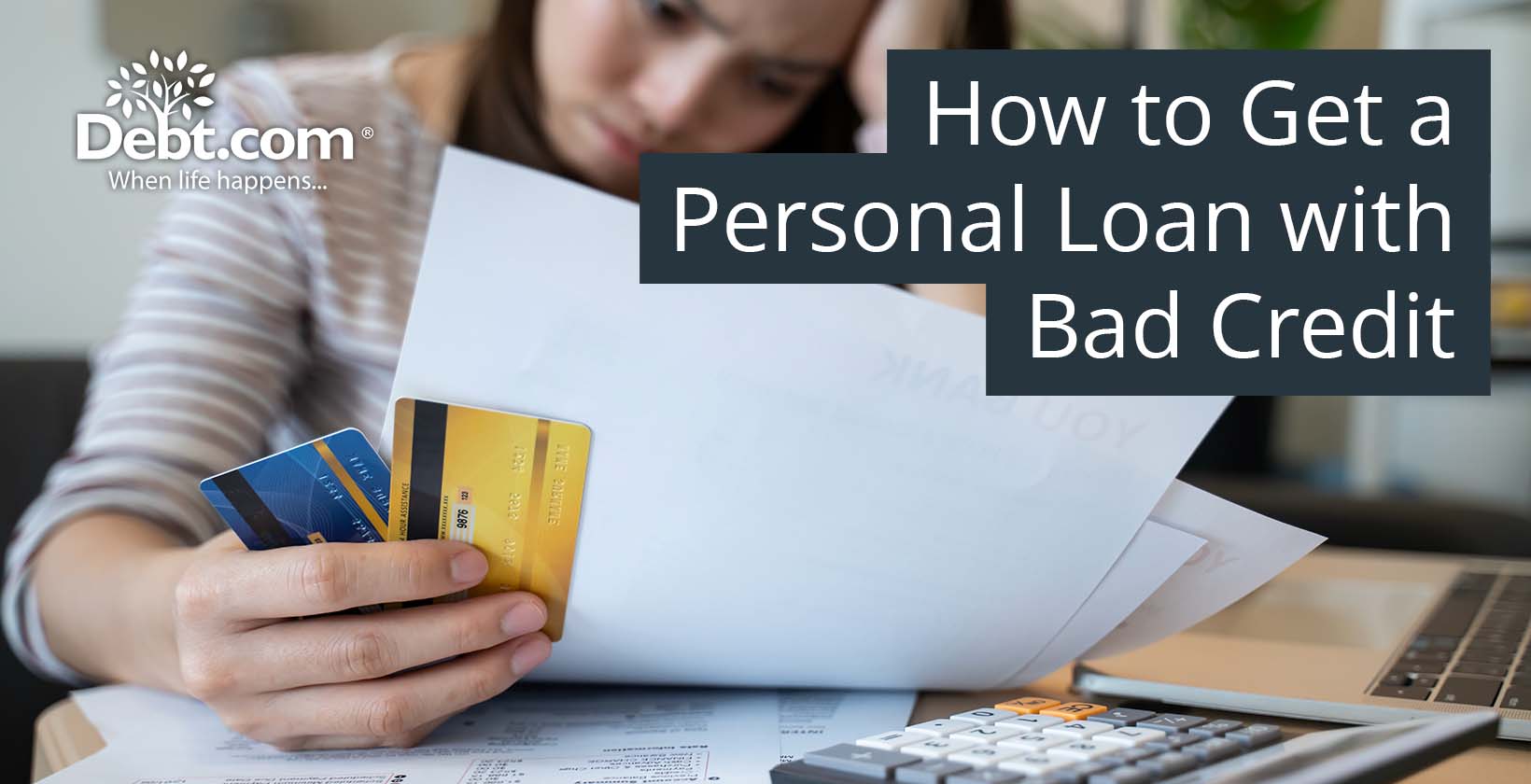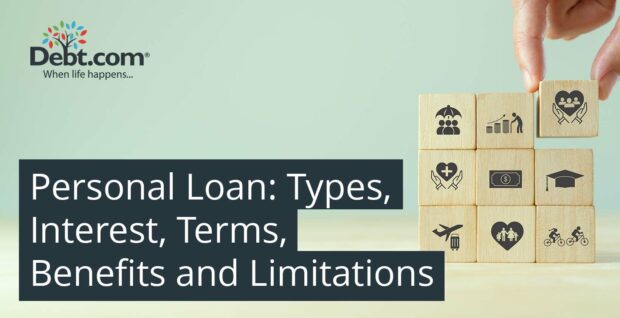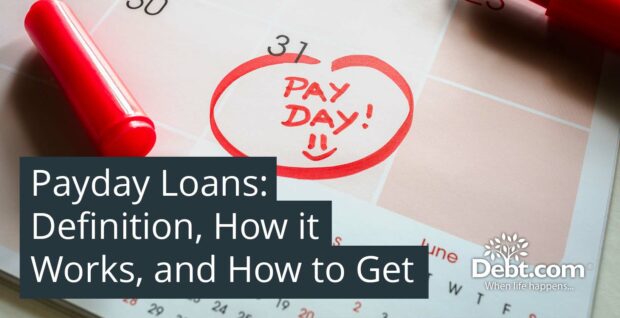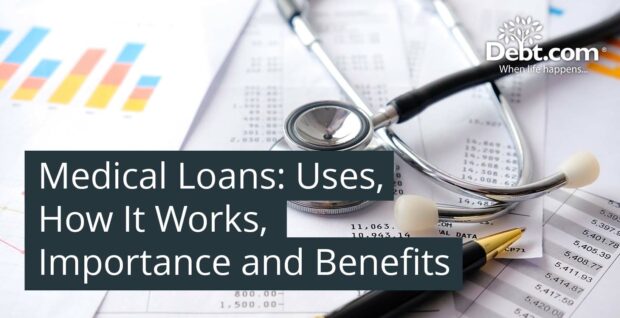
To get a personal loan with bad credit, follow these nine steps. First, check the credit score and review the credit reports from Equifax, Experian, and TransUnion at AnnualCreditReport.com. It helps identify errors or past-due balances that influence the loan terms. Second, review the income and other debts to assess the debt-to-income ratio (DTI). Lenders focus on the borrower’s ability to manage new payments and must ensure their manageable DTI ratio. Third, calculate the monthly payments using a personal loan calculator. Consider a higher interest rate and choose a three to five-year repayment term to ensure the payments fit the budget.
Fourth, compare different lenders for bad credit to find the best rates and terms. Look into community banks, credit unions, and online lenders who offer personal loans for bad credit with flexible approval criteria. Fifth, prequalify for a personal loan for bad credit with at least three lenders to check the borrower’s eligibility and get rate estimates without affecting the credit score. It helps borrowers to find favorable loan terms. Sixth, include a co-signer if required to improve the borrower’s chances of approval and potentially secure a better interest rate. Ensure both parties understand the repayment terms and obligations. Seventh, gather financial documents such as W-2s, tax returns, bank statements, and ID proofs to support the loan application. Clear and complete documentation is crucial for approval.
Eighth, be prepared for a hard inquiry when finalizing the loan with a lender. The hard pull temporarily impacts borrower’s credit scores, so they must manage their applications within 45 days to minimize the effect. Lastly, obtain the funds from a bad credit personal loan, with the money typically deposited into the bank account within a business day following approval. Many lenders offer autopay options to ensure timely payments, which helps build credit over time.
A personal loan is a sum borrowed for various personal expenses, while bad credit refers to a credit score below 670 (FICO) or 661 (VantageScore). Understanding these aspects helps borrowers navigate “How to get a loan with bad credit?” and explore their options with personal loans with bad credit. Following these steps improves the chances of getting a loan, whether looking for personal loans for bad credit or “Can you get a loan with bad credit?”
Table of Contents
1. Check Your Credit Score
Check your credit score and credit reports. The credit score is a factor in calculating the interest rate on a personal loan. Rates vary from 6% to 36%, with 30% or more frequently occurring for lower scores. The credit card company or bank provides a complimentary evaluation of one or all three credit scores for borrowers who haven’t done so recently. Request the free credit reports from Equifax, Experian, and TransUnion once a year at AnnualCreditReport.com for a more thorough look. It is required by federal law. Examine these reports for any mistakes or past-due balances that hurt the credit. Correcting these errors boosts the credit score and helps get a better personal loan rate.
2. Review Your Income and Other Debts
Review your income and other debts to increase the chances of receiving a personal loan with bad credit. Lenders specializing in bad credit loans evaluate the ability to manage new loan payments by looking at how much of the monthly income goes toward debt repayment. It is known as the debt-to-income (DTI) ratio, and each lender has different acceptable limits.
A lender who says they approve DTI levels up to 50% must raise suspicions. Borrowers with better credit scores are the only ones who use the maximum. Credit score limits the ability to use a DTI ratio. The lender alternatively provides borrowers with a reduced loan amount if their debt-to-income ratio surpasses their threshold.
Consistent income from a salaried or full-time hourly position is required to earn approval with bad credit. Commissions, tips, and self-employment income are not accepted by lenders for borrowers with poor credit. A detailed analysis of the earnings and obligations ensures borrowers understand their financial situation and enables them to take action to lower their debt-to-income ratio, raising their chances of getting a loan.
3. Calculate Your Monthly Payments
Calculate your monthly payments to handle a personal loan with poor credit efficiently. Understanding the monthly payments is essential since they are significantly greater than the minimum payments on credit cards. Use a personal loan calculator to determine if the monthly payment fits the spending plan.
Calculators frequently default to lower interest rates, so choose the highest rate available to estimate the prospective payments accurately. Choose a repayment term of three to five years, even if the lender offers longer options. Better credit-scoring consumers are usually eligible for longer repayment terms.
For example, entering these facts into a loan calculator shows borrowers the monthly payment amount if they’re considering taking out a $10,000 personal loan with a high interest rate because of bad credit. It lets borrowers decide whether the payments are manageable within their present financial circumstances, guaranteeing a comfortable loan payment.
4. Compare Different Lenders for Bad Credit
Comparing different lenders for bad credit is critical when looking for a personal loan with less favorable credit. Apply to several lenders and thoroughly examine their rates and fees because each has different terms and conditions. Community banks and credit unions give discounts or reduced costs for negative credit loans, so it’s worth checking them out. Online lenders specializing in personal loans for individuals with poor credit offer flexibility in approval criteria, considering career history and educational background. Obtain information directly from lenders on essential aspects, including minimum credit ratings, loan amounts, and repayment terms.
Lenders usually have different minimum credit score criteria; depending on the institution, these are as low as 500 or as high as 670. Loan amount options differ significantly, with some specializing in lesser loan amounts, such as under $2,500, while others offer loans up to $50,000. Bad credit lenders typically cap loan levels at $50,000.
Loans for borrowers with poor credit usually have one to five-year repayment durations. Monthly payments are lower with a longer payback period. Some lenders offer longer terms for smaller loan amounts, typically up to five years.
For example, compare lenders’ interest rates and repayment terms when contemplating a $5,000 personal loan. The comparison allows borrowers to choose lenders whose terms fit their financial circumstances and payback capacity. Conducting comprehensive research and comparing offers increases the likelihood of finding a lender willing to offer favorable loan terms customized to specific requirements while accommodating poor credit.
5. Prequalify for Bad Credit Loans
Prequalify for bad credit loans to determine borrowers’ eligibility and prospective interest rates without affecting their credit score. It enables borrowers to use a complimentary tool provided by lenders to assess their likelihood of approval and obtain rate estimates. Get prequalified with at least three lenders after evaluating them.
Lenders typically perform a soft credit pull during prequalification, which does not impact credit scores. The method provides crucial information about borrowing choices without requiring a formal loan application. It’s an opportunity to discover favorable terms and pricing based on creditworthiness and financial status.
Prequalifying with multiple lenders reveals different rates and repayment terms. For example, comparing prequalification offers allows borrowers to make an informed decision when considering a $10,000 personal loan with poor credit. The process simplifies the loan application and increases the confidence in securing a loan that aligns with the financial goals.
6. Include a Co-Signer if Required
Include a co-signer if required to obtain a personal loan for poor credit. The ability to qualify independently is crucial if the loan amount is not approved. Adding a co-borrower or co-signer enables borrowers to borrow more and improve approval chances. A co-signer is a creditworthy individual, such as a friend or relative, who shares equal responsibility for the loan without direct access to the funds.
Co-borrowers, like co-signers, have access to and benefit from the borrowed money. Carefully consider the implications of involving someone else in the loan application. Late payments negatively impact the credit score of the co-signer or co-borrower, and they are legally obligated to repay the debt if they default.
Establish a clear repayment plan with the co-signer or co-borrower before finalizing the loan agreement. Openly discuss financial responsibilities and expectations throughout the loan term to maintain a positive relationship and mutual understanding. Having a co-signer or co-borrower enhances the chances of getting approved for the loan and demonstrates solid financial planning and commitment to repayment.
7. Gather Financial Documents
Gather financial documents to prepare for a bad credit personal loan. Lenders require specific financial records to assess borrowers’ creditworthiness and repayment capacity. Obtaining a loan with bad credit often requires more documentation than obtaining a basic personal loan. It includes W-2s from prior years, tax returns, and bank statements detailing the income sources.
Poor credit applicants must provide government-issued identification, such as a driver’s license, full name, address, and Social Security number. They must specify loan details such as its purpose, desired amount, and preferred term.
Lenders typically request W-2 forms from the past two years and federal tax returns for the same period to verify income stability and financial history. They require the two most recent bank statements from all accounts to assess financial health and payment management. Recent pay stubs further confirm income stability.
Submit utility bills or mortgage statements to verify the residential address. Respond promptly to any additional queries from lenders to ensure a smooth approval process. Ensure all documents are clear and legible before submission, as unclear or difficult-to-read documents are rejected. Compiling and organizing these records thoroughly enhances the chances of loan approval, even if borrowers have poor credit.
8. Be Prepared for a Hard Inquiry
Be Prepared for a Hard Inquiry to ensure readiness for the final step in securing a personal loan with bad credit. The lender conducts a hard credit check or a hard pull once borrowers have selected a lender and are ready to proceed with their loan application. The inquiry temporarily lowers the credit score by a few points.
A single hard inquiry typically has a minimal impact on the credit score, but be aware of the potential effects, mainly if borrowers apply for more than one loan. Making on-time payments in the months following the inquiry helps offset the initial drop. Numerous hard inquiries within a short period raise concerns among lenders about financial instability or debt management.
Completing the loan applications within 45 days mitigates the impact of multiple hard inquiries. Multiple inquiries within the timeframe for the same product type are consolidated into a single inquiry on the credit report according to the latest FICO scoring model. It minimizes the negative impact and demonstrates to lenders that borrowers actively seek the best terms for the loan without overextending themselves.
For example, comparing personal loan offers from different lenders within a focused period helps borrowers make informed decisions while protecting their credit score. Being prepared involves understanding the impact of hard inquiries, managing applications strategically, and ensuring the credit report reflects responsible financial behavior.
9. Obtain Your Funds from a Bad Credit Personal Loan
Obtain your funds from a bad credit personal loan to complete the borrowing process. Lenders fund loans within a business day after receiving the necessary documentation, depositing the money directly into the borrower’s bank account. Specific lenders offer the option to pay off the creditors directly for debt consolidation loans.
Most lenders provide autopay, deducting the monthly payment from the borrower’s bank account on the due date. Establishing automatic payments is advantageous because many lenders offer discounted rates or reduced fees. Ensuring timely payments demonstrates financial responsibility and helps build credit.
What is a Personal Loan?
A personal loan is a sum of money borrowed to cover a variety of personal expenditures, such as debt consolidation, home renovations, medical bills, or unforeseen costs. Banks, credit unions, and online lenders offer personal loans. Lenders charge fees, and the borrowed amount must be repaid over time, usually with interest.
How do Personal Loans Work?
Personal loans work by beginning with an application to a lender, who evaluates the borrower’s information to decide whether to approve or deny the request. The lender then provides loan terms, including loan amount, interest rate, repayment schedule, and related fees. Lenders distribute funds by check or direct deposit once the transaction is complete.
Regular installment payments are made over the agreed term to repay the loan. Following the repayment plan is crucial, as failing to make payments negatively impacts the credit report and results in legal action from the lender to recoup the amount.
What is Considered a Bad Credit?
A credit score below 670 is considered a bad credit. A credit score is regarded as a bad credit if it falls below the “good” risk category according to the two primary credit scoring algorithms, FICO and VantageScore. Any credit score below 670 is considered bad, according to FICO, with “poor” scores falling below 580 and “fair” scores ranging from 580 to 669. The VantageScore model defines bad credit as any score below 661, with “very poor” scores below 499, “poor” scores between 500 and 600, and “fair” scores between 601 and 660. FICO is more normally used in loan decisions than VantageScore.
Bad credit often stems from negative information on borrower’s credit reports, such as late payments, failures, and bankruptcies. It leads to higher interest rates, challenging qualifying for credit and loans. Having bad credit isn’t necessarily better than having no credit score, as borrowers start repairing the credit from scratch. Repairing bad credit involves disputing inaccuracies on the credit report, requesting goodwill adjustments, and consistently making timely payments. A credit score below 670 for FICO or 661 for VantageScore is generally considered bad credit, which hinders a borrower’s ability to get approved for credit and secure advantageous terms.
How does having a Bad Credit affect Personal Loans?
Having bad credit affects personal loans in the six ways listed below.
- Loan Approval Rates: Borrowers with unfavorable information on their credit reports or low credit scores have a lower chance of getting a personal loan approved. Lenders see them as higher-risk borrowers.
- Higher Interest Rates: Applicants with bad credit who are approved usually receive higher interest rates than borrowers with good credit. Higher rates are charged by lenders to offset the higher default risk.
- Smaller Loan Amounts: Lenders limit the maximum loan amount for borrowers with bad credit owing to worries about repayment capabilities. The purpose of the limitation is to lessen possible losses from lending to borrowers who pose a high risk.
- Stricter Qualifications: Lenders demand extra conditions, including having a cosigner or providing collateral, to approve a personal loan for someone with bad credit. These techniques reduce the risk associated with lending to borrowers with bad credit.
- Difficulty Consolidating Debt: Personal loans are commonly used to consolidate debt to reduce overall interest expenses. Debt consolidation is less practical for borrowers with poor credit, as they find it challenging to be approved for loans with favorable rates.
- Credit Score Negative Impact: Applying for a personal loan with bad credit usually results in a hard inquiry on the credit report. A hard inquiry lowers the credit score, exacerbating the difficulties of increasing creditworthiness.
Why does having a Bad Credit Leads to Higher Interest Rate?
Bad credit leads to higher interest rates because lenders perceive a higher level of risk. Credit ratings are crucial indicators of an individual’s creditworthiness and ability to repay loans on time. Lenders rely on these ratings to evaluate the risk involved in lending money. Borrowers with low or no credit scores are considered higher risk due to potential histories of missed payments, high debt-to-income ratios, or limited credit histories.
Lenders increase interest rates to compensate for the heightened risk of default from borrowers with bad credit. These higher rates act as insurance for the lender, offsetting the likelihood that the borrower fails to meet loan repayment obligations. For example, a borrower with bad credit only qualifies for a loan with a 25% interest rate or higher, whereas someone with excellent credit secures a loan at a low 5% interest rate. The difference in interest rates substantially inflates the overall cost of borrowing over the loan’s term.
Bad credit impacts various types of financing, including mortgages, auto loans, credit cards, and personal loans for bad credit. Lenders view a poor credit score as a warning signal and safeguard their interests by imposing higher interest rates and stricter terms. It helps them manage the heightened financial risk of lending to individuals with low credit scores or limited credit histories. Improving the credit score is essential to secure better loan terms, reduce the overall cost of borrowing, and enhance long-term financial stability.
Is Getting a Personal Loan with Bad Credit Hard?
Yes, getting a personal loan with bad credit is hard but not impossible. Borrowers with poor credit are charged higher fees and interest rates because lenders consider them at higher risk. The origination costs, prepayment penalties, and annual percentage rates (APRs) associated with bad credit loans are frequently more significant than traditional personal loans. Some personal loans for bad credit include collateral requirements, meaning the borrower loses their house or car if they default. These loans frequently have reduced loan limits, often $50,000 or less, to reduce the lender’s risk.
Some companies have less strict requirements that make it possible to get a personal loan even if borrowers have bad credit. Borrowers need to investigate alternative loans for payday; pawn shop secured loans, and no credit check loans. Personal loans are available even with a bad credit history, even if loans for bad credit usually have fewer possibilities, higher rates, and more restricted terms than loans accessible to borrowers with strong credit. Locate appropriate loan solutions to fit the needs with some work and research.
How to Improve Your Chances in Getting a Personal Loan with Bad Credit?
To improve your chances of getting a personal loan with bad credit, there are seven steps listed below.
- Examine the credit report and score. Check the Experian, TransUnion, and Equifax credit reports and scores. Find and fix any mistakes or problems. Dispute erroneous information with credit bureaus to ensure the credit history is correct.
- Compare personal loan offers. Examine offers from different lenders because terms and conditions differ significantly. Look for companies specializing in negative credit loans and utilize resources to get specific loan offers based on credit history.
- Think about a cosigner. Include a credit-worthy cosigner on the loan application. It increases the chances of acceptance and helps borrowers negotiate better conditions. The cosigner is legally liable for loan repayment if the borrower defaults.
- Investigate secured credit. A secured loan is obtained by pledging an asset, such as a car or house. It reduces the lender’s risk and results in cheaper rates than unsecured loans, making obtaining a personal loan with bad credit easier.
- Become prequalified. Profit from lenders who provide prequalification without requiring a credit check. It allows borrowers to compare offers and choose the best conditions without lowering their credit score.
- Improve the credit before applying. Invest effort in enhancing the credit score before applying. It involves using credit-building resources like Experian Boost, paying off debt, and fixing inaccuracies on the credit report.
- Examine the options. Consider alternative options, such as borrowing from friends or family, using a credit card, or seeking assistance from a credit counseling agency if the process of getting loan with bad credit continues to be an obstacle.
Where to Get a Personal Loan with Bad Credit?
Get a personal loan with bad credit from the options listed below.
- Online Loan Providers: Many online providers focus on personal loans with bad credit. These lenders offer rapid funding and frequently have simplified application procedures. Look around and evaluate various internet lenders to get the greatest deals.
- Peer-to-peer lending platforms: These linkups put borrowers in direct contact with private lenders. Investors are more accommodating than traditional lenders, making them suitable for anyone looking to borrow money with bad credit.
- Credit Unions: Credit unions frequently offer greater flexibility than commercial banks regarding lending standards. They are member-oriented and more ready to provide personal loans for bad credit. Join a credit union to apply for a loan with bad credit.
- Bank-secured loans: Some banks offer secured loans in which a savings account or automobile is pledged as collateral. It makes obtaining personal loans with bad credit easier because the collateral decreases the lender’s risk.
- Cash Advances on Credit Cards: Obtain a cash advance if borrowers have a credit card. The loan is not conventional but offers immediate access to funds. Be aware that cash advances frequently incur high interest rates and fees.
- Loans with No Credit Check: A few lenders provide loans with no credit check. These loans are easier to obtain for borrowers with bad credit, but they frequently come with higher interest rates and costs. Be sure to thoroughly review the terms before applying for a loan with poor credit from these lenders.
- Payday Alternative Loans (PALs): Certain federal credit unions offer small-dollar loans with terms that assist members in avoiding the exorbitant expenses associated with payday loans. These are good choices for bad credit personal loans.
- Family and Friends: Borrow from family or friends if conventional loan channels are unavailable. The communication lines remain open, and trust remains intact if treated as a formal agreement.
- Pawn shops: Pawn shops offer secured loans if borrowers need money quickly and have valuables to put up as collateral. The option enables individuals with poor credit to borrow money without needing a credit check.
What are the Best Personal Loans with Bad Credit?
The best personal loans with bad credit are listed below.
- Debt.com (Best for Consolidating Loans and Customer Service): Debt.com stands out as a top choice for the best loans for bad credit because it specializes in loan consolidation and provides exceptional customer service. Debt.com works with multiple lenders to offer customized debt management solutions, even though particular APR ranges and maximum loan amounts aren’t stated. Debt.com is especially helpful for borrowers dealing with serious financial difficulties, such as credit card or school debts, because of its focus on instructional materials and debt reduction solutions.
- Avant (Best for Quick Funding): Avant is renowned as the best personal loans for bad credit due to its emphasis on speedy funding options suitable for customers in desperate financial need. Avant uses patented technology to expedite the credit assessment process, providing a flexible and efficient online borrowing experience with APRs ranging from 9.95% to 35.99% and loan sizes from $2,000 to $35,000.
- Happy Money (Best for Debt Consolidation): Happy Money distinguishes itself as the best loan for bad credit by focusing on debt consolidation. It takes loans ranging from $5,000 to $40,000 and offers fixed interest rates between 11.72% and 17.99%. Happy Money assists consumers in minimizing their total interest expenses and simplifying their financial management by collaborating with reliable financial institutions to help them consolidate credit card debt into affordable monthly installments.
- Lending Club (Best for Co-Borrowers): LendingClub provides the best loans for bad credit with its co-borrower option, which offers APRs ranging from 9.57% to 36% and loan amounts ranging from $1,000 to $40,000. The online application process at LendingClub is easy to use, and loans are approved quickly. The company lets borrowers with bad credit apply with a co-borrower, leading to better rates and bigger loans if they score better.
- OneMain Financial (Best for Secured Loans): OneMain Financial offers secured loans with APRs ranging from 18.00% to 35.99% and loan sizes from $1,500 to $20,000. They specialize in providing the best loans for bad credit. OneMain Financial is a sensible option for effectively leveraging assets to enhance borrowing terms because it offers flexible repayment terms and the ability to secure loans with collateral, such as a car. It suits borrowers with less-than-ideal credit histories but still wants larger loan amounts or lower interest rates.
An annual percentage rate, or APR, is the yearly cost of borrowing, expressed as a percentage of the loan amount and including fees and interest. Understanding APR is critical when comparing the best loans for bad credit because it calculates the total cost of borrowing throughout the loan duration. Borrowers choose the cheapest loan solutions that suit their financial situation by comparing APRs.
Which Lenders should You Avoid for Personal Loans with Bad Credit?
Lenders you should avoid for personal loans with bad credit are listed below.
- Payday Lenders: Payday loans often have high interest rates and brief payback durations, trapping consumers in a debt cycle. Repay these loans by the next payday to avoid severe financial hardship.
- Loan sharks: These unlicensed lenders operate outside regulated financial institutions, charging outrageous interest rates and sometimes resorting to force or threats to collect debts, putting borrowers at serious risk.
- No Credit Check Lenders: These loans come with high interest rates and fees, worsening poor credit customers’ financial problems.
- Title Loan Lenders: Borrowers must pledge their cars as security, risking the loss of their vehicle if loans are not repaid on time. It is a significant danger for borrowers already facing financial struggles.
- Online predatory lenders: These lenders target borrowers with poor credit, charging exorbitant interest rates and hidden costs, offering unfavorable terms, and exploiting borrowers’ urgent financial needs.
- Advance-fee Loan Scams: Borrowers are required to pay an upfront cost before receiving the loan. The promised loan never materializes, leaving borrowers financially vulnerable and needing funds.
How to Spot Scams on Personal Loans for Bad Credit?
To spot scams on personal loans for bad credit, follow the ten steps listed below.
- Look into any potential lenders. It entails reviewing ratings and reviews on reliable websites like Trustpilot and the Better Business Bureau (BBB). Contact the state’s financial regulatory body to confirm that the lender has a license to conduct business there. It assists in filtering out dishonest lenders who do not have the best interests in mind.
- Avoid unsolicited loan offers via email, phone, or social media. These offers often raise suspicions, particularly when they come as a surprise. It is not how legitimate lenders usually initiate contact. Consider these deals skeptically, and only give out personal or financial information after verifying the lender’s authenticity.
- Refrain from working with lenders who claim loans without reviewing the credit report. Its promise seems alluring, particularly to borrowers with poor credit, but it frequently results in hefty costs and outrageous interest rates. A legitimate lender always determines the loan terms based on the creditworthiness.
- Be wary of upfront costs. Reputable lenders charge fees, but they are typically not demanded up front; instead, they are subtracted from the loan amount or paid after the loan is disbursed. Lenders who ask for money before giving borrowers a loan are scammers.
- Verify the security of each website where borrowers enter personal data. Check if the URL starts with “https://” and look for the padlock icon in the browser’s address bar to signify a secure connection. It reduces the likelihood that fraudsters obtain private information.
- Check the lender’s contact details. Reputable lenders give borrowers a verifiable physical location, phone number, and other contact information. Use caution if any of the material is missing or seems questionable.
- Watch out for high-pressure tactics. Reputable lenders offer borrowers enough time to review and consider the loan conditions. Take a step back and reevaluate the options before making a quick decision.
- Read the fine print in any lending contract. Fraudsters frequently use complicated terminology to hide fees, interest rates, and repayment conditions. Be sure to thoroughly review all terms and conditions before entering into any agreement, and seek clarification on any unclear areas.
- Be aware of any unprofessional correspondence from the lender. Reputable lenders communicate professionally and transparently. Indicators of scams include confusing communications, improper grammar, and illegitimate email addresses.
- Consult a credit counselor or financial advisor when in doubt. These experts offer objective advice and assist in navigating the nuances of loan offers, ensuring that the choices align with the financial security. Reduce the chances of being a victim of a loan scam when looking for personal loans for borrowers with bad credit by carefully following these procedures.
What are the Alternatives to Personal Loans for Bad Credit?
The alternatives to personal loans for bad credit are listed below.
- Credit Card: Credit cards for bad credit offer faster access to funds than conventional personal loans. The interest rates are much lower than payday or auto title loans, even if comparable to personal loans for poor credit.
- Peer-to-Peer Loan: Peer-to-peer lending services are more willing to lend to borrowers with low credit ratings, often starting at 600. The funding and application processes are quicker than with conventional loans.
- Home Equity Loan or HELOC: Obtain a home equity loan or a home equity line of credit (HELOC) if there’s 15% to 20% equity in the property. These solutions have lower interest rates than credit cards or payday loans but risk the house in the event of a default.
- Buy Now, Pay Later (BNPL) Loan: BNPL services allow borrowers to break down larger purchases into smaller, interest-free installments. It helps pay for particular products without requiring a full personal loan.
- Retirement Accounts: The money in the 401(k) and other retirement accounts is used as collateral for a loan. The interest rates are often reasonable, but there are penalties if borrowers leave their jobs before repaying the loan.
- Friends or Family for a Loan: Getting a loan from dependable family members is less expensive, but establishing a clear repayment schedule prevents strained relationships.
- Payment Plan: Discuss a direct payment plan with the provider before taking out a loan.











